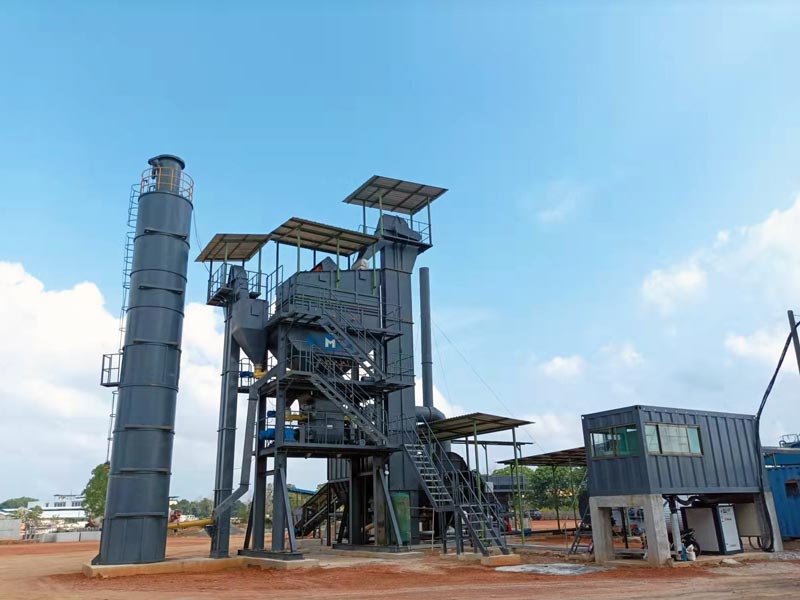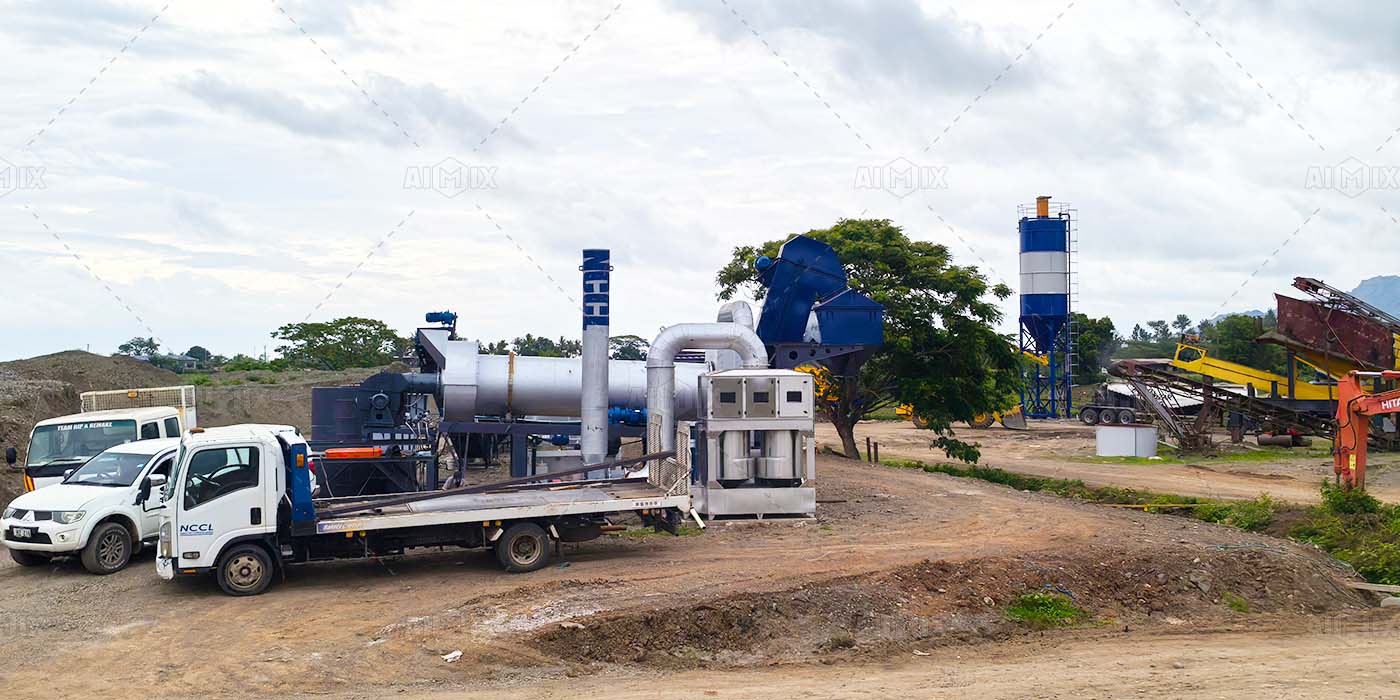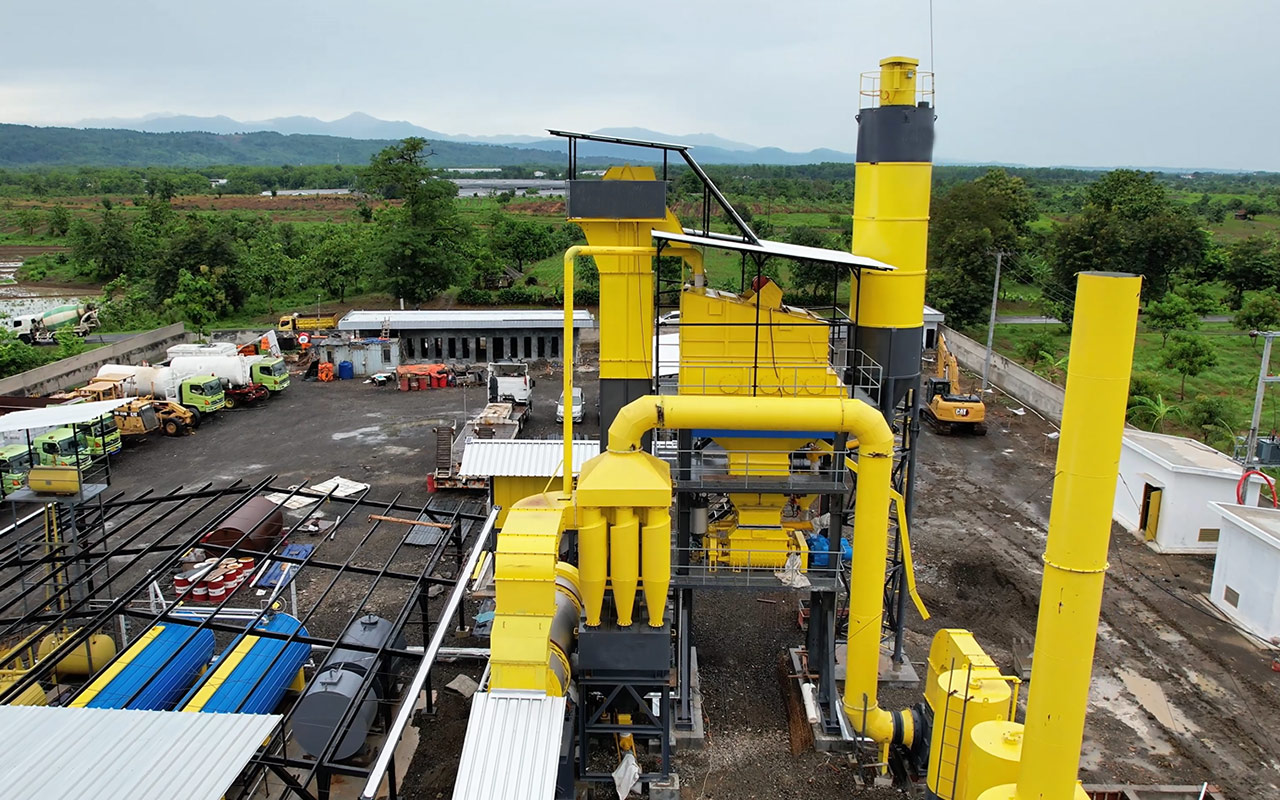When it comes to asphalt mixing, the choice of mixing technology is critical for achieving the desired quality and performance of the asphalt mixture. Two primary types of mixing engines are commonly used: self-falling and forced mixing systems. Each has distinct characteristics that influence the mixing effect and the suitability for different aggregate particle sizes. This article explores these differences to help users make informed decisions.

Self-Falling Mixing: Characteristics and Effectiveness
Self-falling mixing, often seen in drum mix asphalt plants, relies on the gravitational force to mix materials. In this type of system, the asphalt binder and aggregates are introduced into the mixing chamber and allowed to fall freely, relying on gravity to achieve a blend. This method is generally suitable for larger aggregates, as the falling action effectively combines the materials without excessive mechanical agitation.
The mixing effect of self-falling systems can be adequate for producing hot mix asphalt, especially when aggregate sizes are consistent and within a certain range. Typically, this method works well with aggregate particle sizes of 12-25 mm. However, the mixing quality can vary, particularly with finer aggregates or when a more homogeneous mixture is required. This variability can lead to inconsistencies in the asphalt’s performance, making self-falling mixing less ideal for high-performance applications.

Forced Mixing: Enhanced Homogeneity and Versatility
In contrast, forced mixing systems are designed to provide a more uniform blend of materials through mechanical agitation. This type of mixing engine is prevalent in batch mix asphalt plants, where high precision and consistency are essential. The forced mixing action ensures that all components—aggregates, binder, and additives—are thoroughly combined, resulting in a homogeneous mixture.
Forced mixing is particularly effective for handling a wide range of aggregate sizes, including finer particles down to 2 mm. This versatility allows for the production of different asphalt types, including warm mix and cold mix asphalt, which may require specific aggregate gradations. The enhanced mixing effect not only improves the overall quality of the asphalt but also minimizes the risk of segregation, ensuring that the final product meets stringent performance specifications.
Furthermore, forced mixing systems can be optimized for various applications, such as producing asphalt mixtures for heavy traffic roads or specialized surfaces. This adaptability makes them suitable for a broader range of projects, enabling users to achieve the desired performance characteristics more reliably.

Choosing the Right Mixing Technology
When deciding between self-falling and forced mixing systems, it’s essential to consider the specific requirements of the project. For instance, if the primary focus is on cost-effectiveness and the use of larger aggregate sizes, a self-falling mixing system may suffice, particularly in mobile asphalt plants where quick setups are necessary.
However, for projects requiring high-quality asphalt with precise specifications, forced mixing systems are often the better choice. The ability to handle diverse aggregate sizes and achieve consistent mixing makes them ideal for stationary asphalt plants focused on producing high-performance materials.
Ultimately, understanding the differences between these mixing technologies allows users to select the optimal system for their specific needs, ensuring efficient production and high-quality asphalt mixtures.
Conclusion
In conclusion, the differences between self-falling and forced mixing main engines significantly impact the mixing effect and suitability for various aggregate particle sizes in asphalt production. Self-falling systems offer simplicity and are well-suited for larger aggregates, while forced mixing systems provide enhanced homogeneity and versatility for a wide range of applications.
By evaluating the specific requirements of their projects, users can make informed decisions about which mixing technology to employ. Whether operating a small portable asphalt plant or a large stationary facility, selecting the right system is crucial for achieving optimal performance and quality in asphalt mixtures.